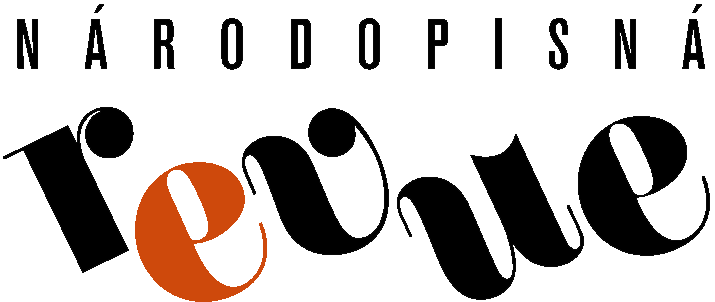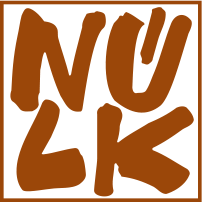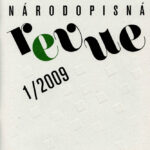Journal of Ethnology 1/2009 deals with the theme “the others and we”, especially from the ethic point of view. Michalea Ferencová concentrated on the relations between Slovaks and Hungarians in Nové Zámky in Slovakia; her two case studies describe the situation concerning the local monuments that are not only an element of rivalry between the Slovak majority and the Hungarian minority; they can become, however, an instrument of interethnic relations in the town (Memorials within the Slovak-Hungarian Relations: Ethnic Struggles and Their Regulation in South Slovakia). Irena Jenčová deals with the life conditions of Czechs and Slovaks in London, as well as with the mutual relations between migrants from these countries (The institutions and the relations of Slovaks and Czechs in London). Ivan Hlavatý presents the research on the Greek minority in Northern Moravia, emphasizing the position of Othodox priests (Orthodox priests in Greek emigration in Northern Moravia) and Jarmila Pechová submits the historical knowledge on life of children at the German settlement in the Vyškovsko region (Children’s Life in the Villages of a Former Language Island in the Vyškovsko Region).
Stopping with Photos section (Hana Dvořáková) presents a photography from the American stay of ethnographer František Pospíšil in 1930, in which he is captured, apart from other personalities, with the chieftain of Osage Tribe from Oklahoma. Transferring Tradition column publishes the contributions by Ctibor Nečas (The History of Romany Theatre in the Strážnicko Region), Tereza Vrbová (Flamenco and its road from Andalusia to (not only) Moravia) and Helena Beránková (Those old people and we. Habitation of older generations in Moravian village at the beginning of the third millennium). Social Chronicle remembers the anniversary of ethnologist Jan Pargač (born 1949) and publishes the obituary notice of folklorist Antonín Satke (1920-2008), with his bibliography enclosed. Other regular columns include the reports of conferences, exhibitions, festivals and concerts and the reviews of new book editions.
Memorials within the Slovak-Hungarian Relations: Ethnic Struggles and Their Regulation in South Slovakia
The paper focuses on the issue of interethnic relations within a nation-state in connection with the issue of public commemoration. On the example of two case studies concerning the memorial-building activities in the town of Nové Zámky in South Slovakia, the author demonstrates how the local authorities use memorials for the present political purposes: 1. as means of the ethnic struggles between the core nation of Slovaks and the Hungarian minority, 2. as tool for the regulation of interethnic relations. The first case study describes the efforts of the representatives of Slovaks to restore the monument to the Czechoslovak legionaries from the interwar period, and the counter-efforts of the representatives of Hungarians to hinder the restoration. At the same time, the case documents the struggle of the mentioned ethnic groups for their status within the state as well as the efforts of the Mayor to forestall the ethnic confrontations. The other case study describes the unveiling ceremony of the statues to commemorate Anton Bernolák, a catholic priest and the author of the first version of Slovak literary language, and György Széchényi, a former archbishop of Esztergom, in the city centre. Here the author points out the endeavour of the municipal representatives to foster the interethnic tolerance and ethnic balance in the town.
The Institutions and the Relations of Slovaks and Czechs in London
The theories of transnational migration offer such a form of experience and identities, which is not anchored in the assumed unity of place, culture and identity, touched with ideology. In this sense, the identities of migrants are usually formed in the discourse of nationality; their nationality relations revolve around the loyalty to the nation-state and the imaginary nation-community. The essay points out in which way the institutions and the type of accommodation influence the creation of “Czechoslovak community” consciousness. The author concentrates on the influence of concrete institutions (accommodation and work agencies, job agencies, websites) because of which the ethnic schemes “I am Slovak”, I am Czech” are mobilized only seldom within the concrete environment. For entering into friendly and partner relations, the factors resulting from practical life in a metropolis are more important than the nationality.
Orthodox priests in Greek emigration in Northern Moravia
The issues of the Greek minority in the Czech Republic, its arrival and development, is a matter of the always increasing number of professional texts whereby the most of them present the results of historical research work. Just a small part thereof is ethologically oriented. The contribution concerning the Greek priests in emigration has lifted the veil, metaphorically speaking, on the theme that is rather historical; its protagonists, however, had an essential influence on the life and traditions of the Greek community at the end of the 1940s, in the course of the entire 1950s and occasionally in the early 1960s. The essay analyses the structure of Greek emigration between 1948 and 1949 from the point of view of religiosity, and the role of a low number of Greek priests in the life of refugees. Because of their predominantly unofficial clerical activities within the community, only few written sources have survived. Therefore, the most data are based on the memories and materials of surviving contemporaries and family members. Nevertheless, those data give a quite plastic picture of how not only the faith, Orthodox traditions and through them also the fatherland’s folk traditions were living at the first generation of refugees thanks to the work of Greek priests; they also show how the connected folk and Orthodox traditions are again brought to life at the contemporary Greek minority. The theme has been less investigated and the research is still running but one can presume – despite the decreasing number of survivors and the poor archive sources – the next extension of knowledge on the history and life of the Greek minority in the Czech Republic.
Children’s Life in the Villages of a Former Language Island in the Vyškovsko Region
The paper deals with the life of children in eight former German villages in the Vyškovsko Region, since the end of the 19th century until the forced transfer in 1946. The children grew up within the environment that put great stress on traditions, catholic religion and definition and safeguarding of their German identity against the Czech surroundings, which was demonstrated by wearing the local folk costumes and surviving of the ancient dialect and many habits. The upbringing in families, at school or in clubs was aimed at the support of German national feeling. The contacts with the Czech children were minimal in the so-called upper language island; the Czech families became assimilated, or they were not integrated into the village collective. The Czech minority schools founded in the German villages after 1918, especially the lower secondary school in Kučerov (1926), incurred displeasure and became a source of quarrels. The more frequent contacts between the Czech and the German children can be seen in the ethnically mixed and bilingual environment of the so-called lower language island.



